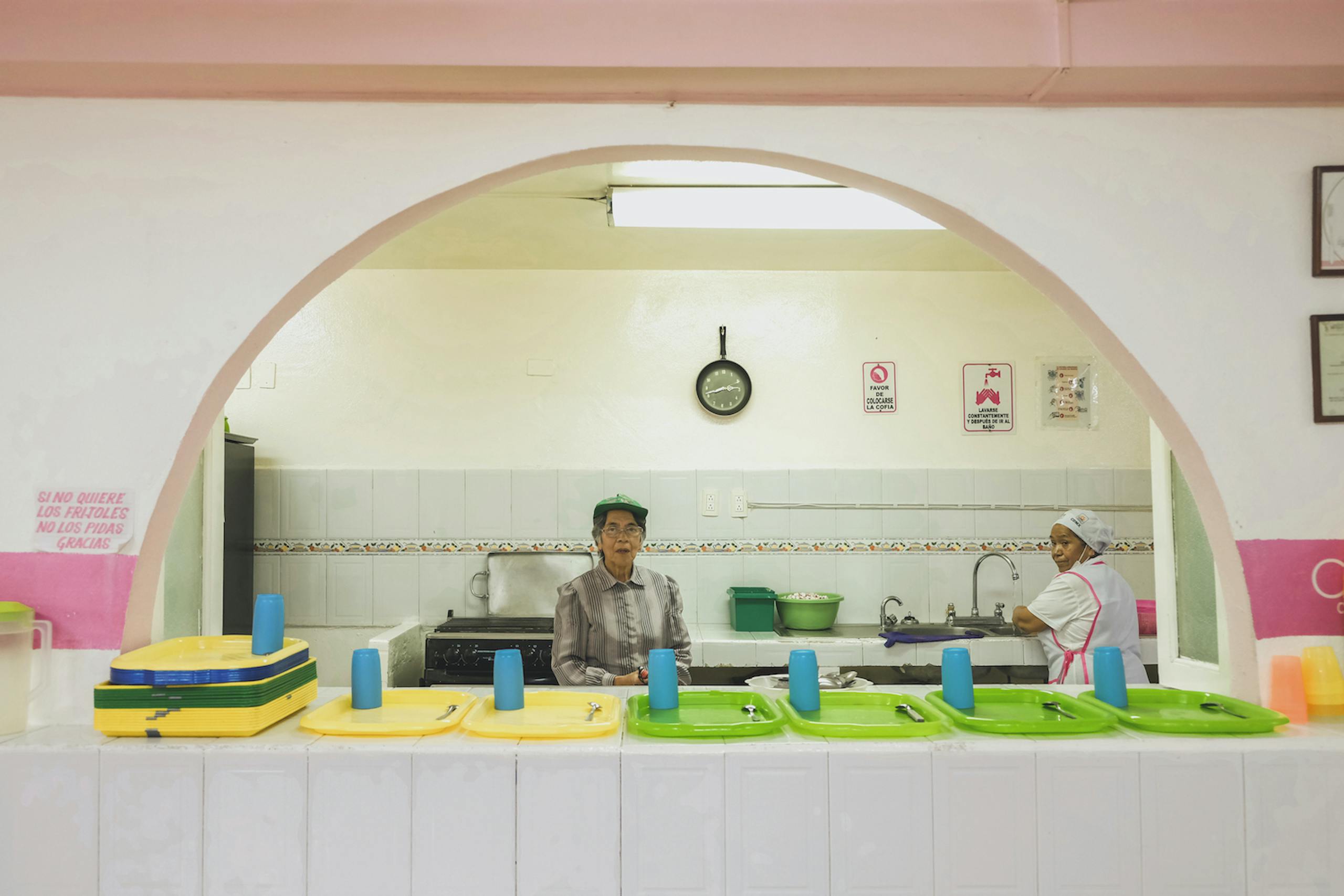
Comedores Comunitarios, Città del Messico, photo MAIO
How does the kitchen transform from a place of marginalization to a space of sharing and possible emancipation? MAIO architecture studio proposes—as part of the Home Sweet Home exhibition—Urban K-Type, a prototype urban kitchen that is the result of deep research into the political role of this environment. One of the studio's founders, Anna Puigjaner, tells us how examples of community kitchens can be found in various parts of the world, from Peru via Mexico to Tokyo.
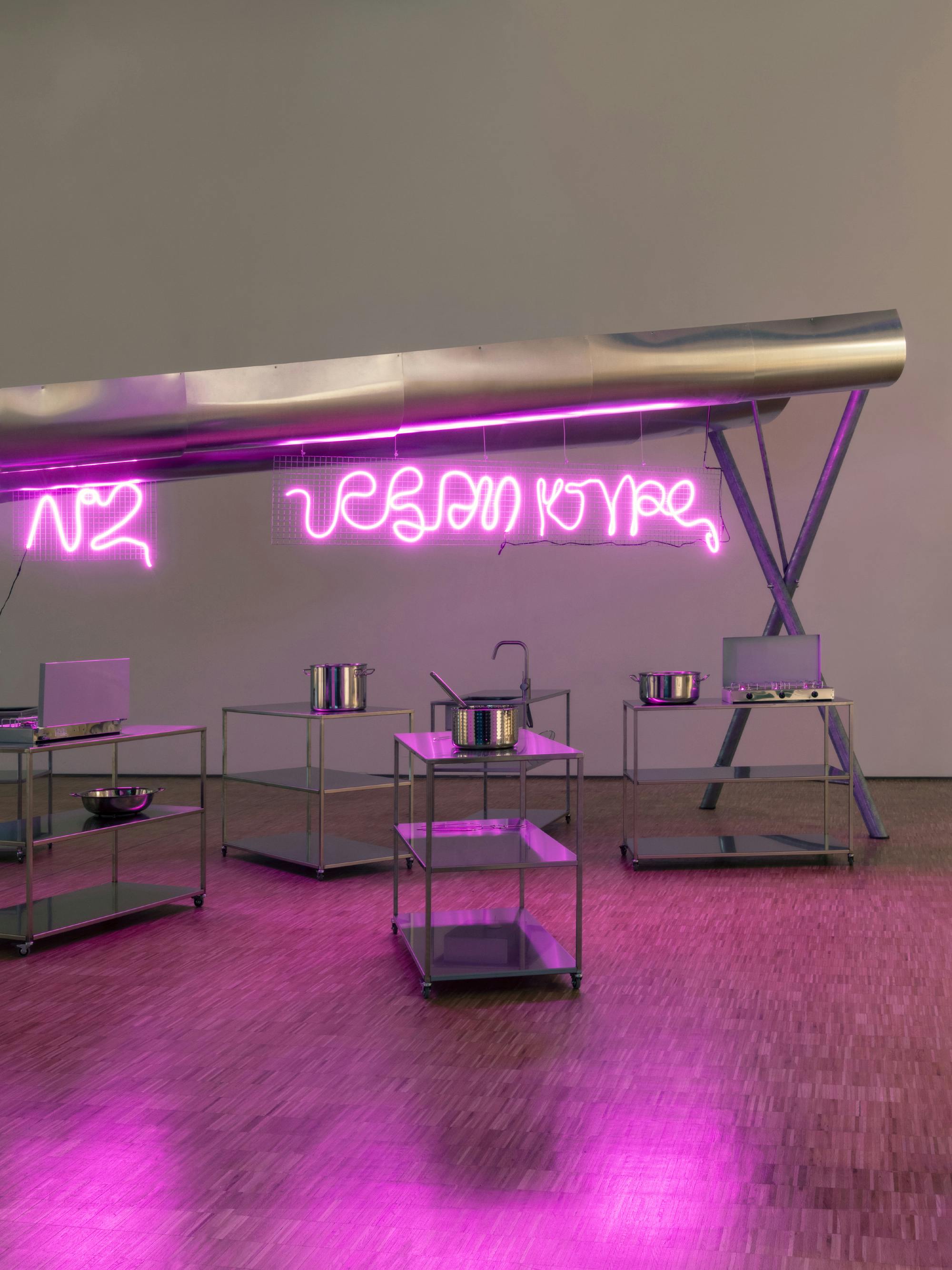
MAIO installation for Home Sweet Home, Triennale Milano, 2023, photo Simone Marcolin

MAIO installation for Home Sweet Home, Triennale Milano, 2023, photo Simone Marcolin
Lima, Perù
One of the most extensive urban kitchen typologies was born at the end of the 1970s in Lima, Peru, during a period of great social mobilization and politicization that ultimately brought down the military regime. Between 1978–1979 the national teachers union SUTEP occupied local schools as they pressed for better wages. In solidarity with the strikers, self-organized groups of women began to prepare collective pots of food for them. For weeks, schools became places of political discussion about working conditions, housing, and communities. Many women who were preparing these collective pots also participated in political meetings, which encouraged them to start a women’s organization focused on providing food for their families and communities more widely.
The simple action of displacing from the home an ordinary and normally private action such as cooking, unveils the historical conflicting relationship between domesticity and caring labor.
Initially, collective cooking took place in people’s homes, but in the 1980s, under the government of Fernando Belaúnde (1980-1985), a series of projects started to expand these community initiatives. Among others, they promoted the design and construction of a specific urban kitchen typology, buildings with a footprint of no more than seventy square metres that are usually located on corners, near community centres or public squares. Soon, these cooking initiatives transcended the preparation of meals and evolved into a complex women-driven enterprise that propelled their agency as politically active subjects.

Comedores Populares, Lima, photo MAIO
These kitchens became a place where women developed their capacity to plan and negotiate community project proposals with the State, the private sector and other international aid organizations. When all of this started, women lacked social and political visibility, as well as access to resources and education. These kitchens therefore meant something more than bare access to food; they were an opportunity to become a part of and play a role in a public organization beyond the private domestic sphere. Currently, the so-called Comedores Populares in Lima provide food to nearly half a million people per day, with more than one hundred thousand women employed in cooking for the community, who continue in many cases to be politically active.
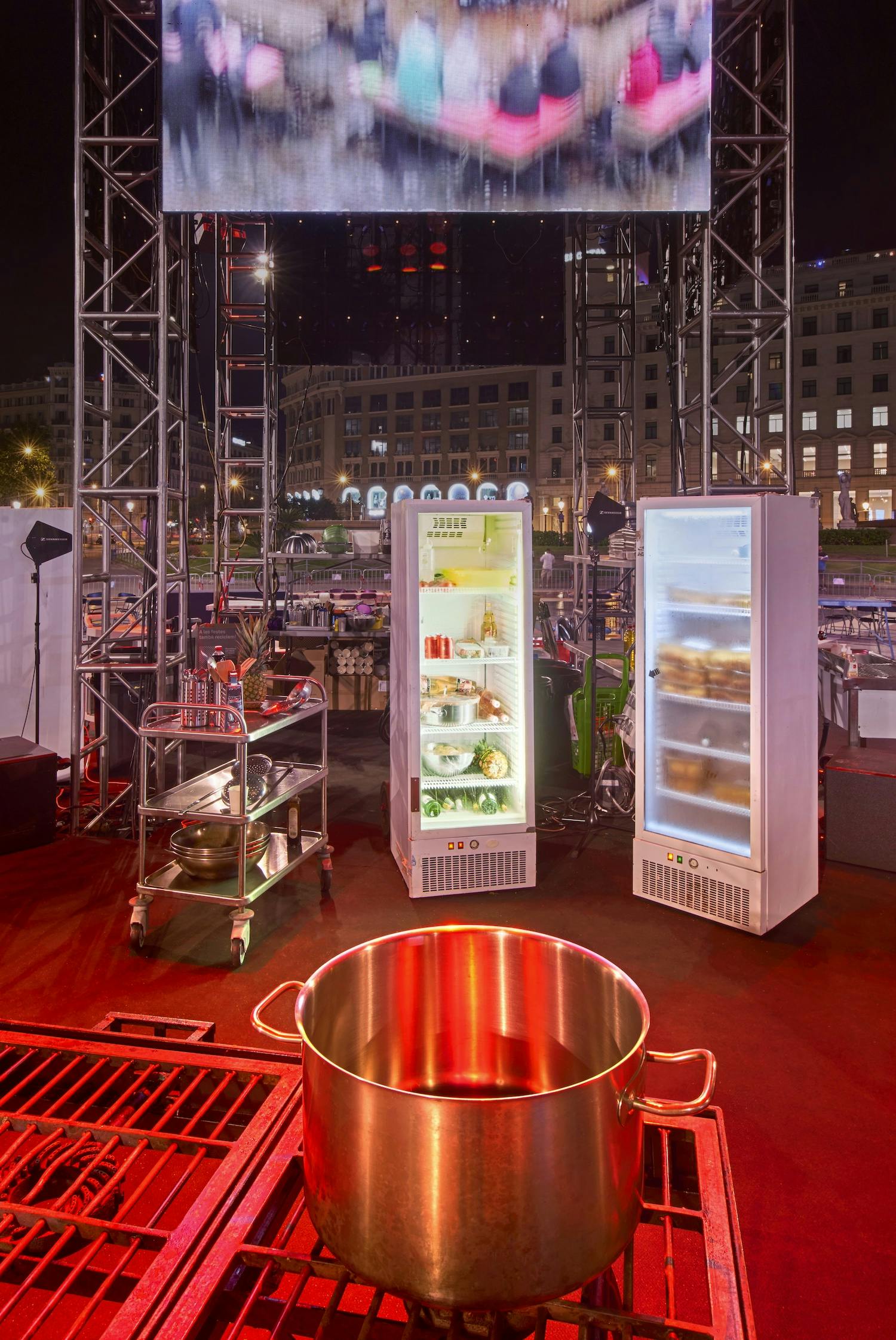
Urban Kitchen, Barcelona, 2022, photo Josè Hevia
Mexico City, Mexico
Influenced by this example, in 2009, the government of Mexico City initiated a social programme, as a response to the 2000s financial crisis, called Comedores Comunitarios, with the aim of relieving financial pressures due to the economic crash. While soup kitchens had been running for years, serving free meals to people with very limited resources, much of the population affected by the economic crisis either could not use them because their economic situation wasn’t dire enough, or simply wouldn’t. The city decided to promote collective kitchens run by a mixed management system – half-public, half-private, with shared responsibilities – to encourage community participation and promote citizen appropriation, all the while making a significant impact with limited economic resources. The system is simple: any group of three people with a room at home larger than thirty square metres, can apply to use it as a community kitchen. If accepted into the programme, the city will install an industrial kitchen and deliver various nonperishable food items like rice or beans on a biweekly or monthly basis. The people responsible for each kitchen, in turn, are expected to cook for their community and offer a daily lunch menu in their home. Thanks to this government subsidy, the menu is sold for a low price, but assures a minimum wage to those participating in the preparation of food and maintaining the space.

Urban Kitchen, Barcelona, 2022, photo Josè Hevia
Turning the privacy of the home into a public infrastructure, the programme understands the diffuse condition of contemporary domesticities, while tackling labour precarity, as well as heteropatriarchal biases, given that this model of cooking is not performed mostly by women within the privacy of the family home, but by groups of citizens belonging to a public system who are able to engage with different social structures. In the years since the programme began, hundreds of houses in Mexico City have been refurbished to accommodate communal daily meals, transforming private homes into public spaces. Yet the transformation of a home into a Comedor Comunitario typically involves only minor changes to the structure of the house itself. The communal dining room might simply be located in an old garage, or a patio may be covered. The residents of these homes co-live with their neighbours during lunch hours. The public and the private, the domestic and the urban, all coexist.
Tokyo, Japan
The social empowerment that these urban kitchens provide has also been one of the driving forces of a cooking movement that has recently emerged in Japan. In 2012, in response to an increased awareness of social isolation and loss of bonds, Hiroko Kondo began holding a pop-up communal kitchen for the children of her neighbourhood in her grocery store. This was the 123 first initiative in what is now an online network of around five hundred groups of citizens who occupy existing spaces like bars or bakeries to cook daily meals in Tokyo.
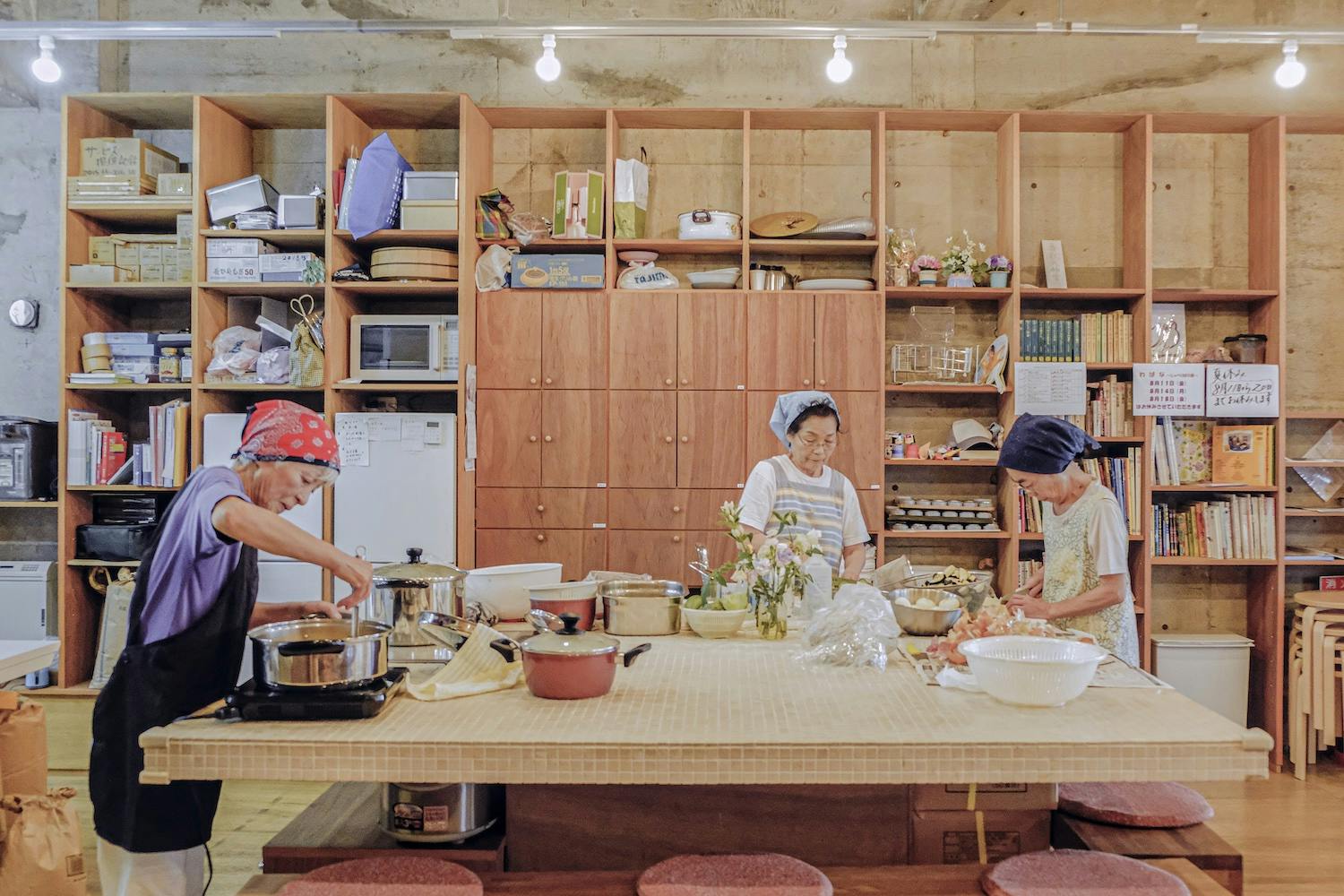
Kodomo shokudō, Tokyo, photo MAIO
Called Kodomo Shokudō, this Japanese ephemeral kitchen encompasses a multiple and heterogeneous set of different spaces and activities, placing the act of sharing food, and its potential to break down cultural, social and intergenerational barriers, at the centre of its concern. It owes its success to its liquid and digital condition, to the ability to move, adapt and change depending on the spaces available and the needs of those participating. It is an architecture that relies on the dispersed nature of capital and power, in which reproductive labour is organized in an open manner through which new social structures and non-blood family relations are bonded.
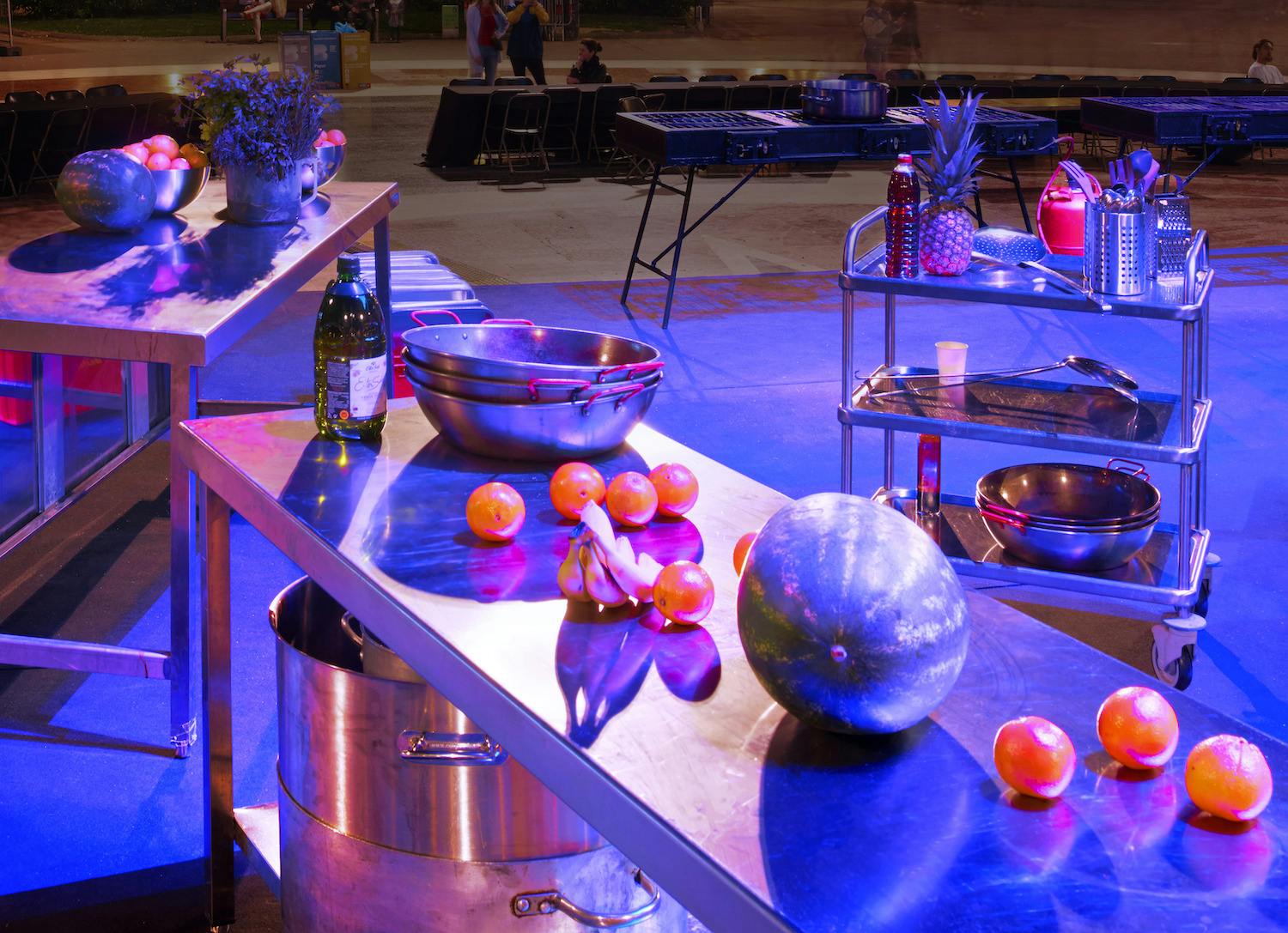
Urban Kitchen, Barcelona, 2022, photo Josè Hevia
Credits
The text is an excerpt from the essay Urban K-Type included in the catalogue of the exhibition Home Sweet Home, curated by Nina Bassoli, Electa 2023, pp. 118-123